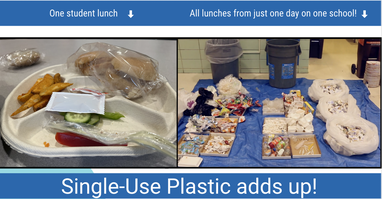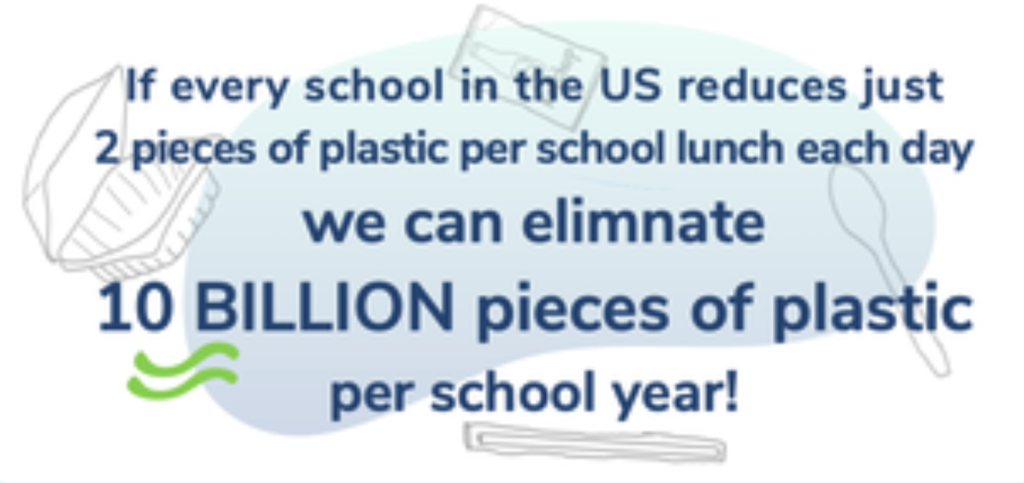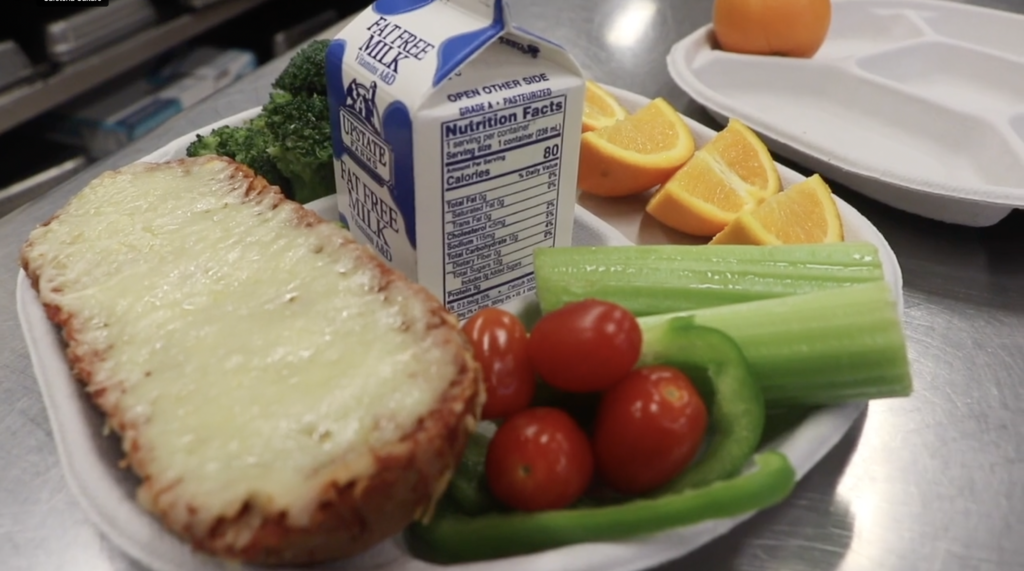

Schools everywhere are invited.
Join New York City, Chicago, Miami Dade, Baltimore, and hundreds of schools across the US for Plastic Free Lunch Day! Over 3,000 schools across the country participated in PFLD in November 2024.
Is your school/school district on board? Choose one easy action for this spring and start planning for a fall Plastic Free Lunch Day
Easy Implementations for one day & every day:
The May 2022 New York Citywide PFLD showed that several easy school food service changes can result in cost savings. See our PFLD Cost-savings Report.
Or run a small pilot, Plastic Free Lunch Day or Plastic Reduction Day, in just a few schools any time this spring.
US Schools serve 7.35 billion meals annually. These meals are packed with non-biodegradable single-use plastics (SUPs) that make a significant contribution to the US plastic waste stream and the staggering global plastic pollution problem. Most of these SUPs end up in a landfill or environment. Plastic Free Lunch Day (PFLD) USA provides an opportunity for students to learn about plastic pollution and for students and school food staff to take meaningful plastic-reduction action.
One plastic free day leads to another!
Join us in creating a vision for an equitable and sustainable future.


Promotion and Communication
Social made easy:
Movie/ Video inspiration for students, teachers, staff and families!
More Resources for Cost Savings
Sample Menu for Plastic Free Lunch Day (see photos below)
Snapshot
🌮 a handheld food day -> no plastic utensils!
+ 🥒 sliced veggies + dip Salad Bar
💚 a no-condiment packet day -> serve in bottles

San Diego Unified School District will eliminate as much single-use plastic with no sporks

Additionally:


Training video for kitchen staff – created for May 16th, 2022 NYC PFLD
Plastic Free Lunch Day – Menu Preparation & Tips for Kitchen Staff
Created by CafeteriaCulture.org in partnership with NYC Department of Education Office of Food and Nutrition Services and Office of Sustainability. This video shows you how to prepare the PLASTIC FREE LUNCH DAY MENU that was served to over 750 elementary schools on Monday May 16th, 2022.
Jump to each part, as listed below.
00:38 PIZZA
02:01 PEANUT BUTTER & JELLY or SUNFLOWER BUTTER SANDWICHES
04:50 CHEESE SANDWICHES
07:04 BROCCOLI
08:36 ORANGES
09:58 SALAD BAR



The world is awash in toxic and polluting single-use plastics made from hazardous chemicals that are contaminating our ecosystems, our communities and our bodies.
380 million metric tons of plastic are produced each year.
The US plastic recycling rate has dropped below 6%!
US Schools serve 7.35 billion meals annually. Those meals are packed with non-biodegradable Single-use plastics (SUPs) that make a significant contribution to the US plastic waste stream and the staggering global plastic pollution problem. Most of those SUPs end up in a landfill or environment.
Plastic Free Lunch Day provides students an opportunity to learn about plastic pollution and take meaningful plastic-reduction action. One Plastic Free Lunch Day leads to another and creates a vision and actionable ideas to move forward in a just and sustainable way.
Each year, we produce over 350 million metric tons of plastic; more than 40% of this is single-use plastic–plastic packaging and foodware that is used for less than 20 minutes. Because plastic is not recyclable, most discarded plastic is sent to landfills or “leaks” into the natural environment.
Plastic does not biodegrade. Instead it breaks or fragments into small particles called microplastics and then into smaller particles called nanoplastics. Because plastic is made from fossil fuels and thousands of persistent toxic chemicals, they transfer thousands of migrating chemicals into our food during use. After disposal and fragmentation, plastic particles carry and distribute these toxic chemicals to every inch of the globe.
Scientists have found micro and nanoplastics in our digestive tract, deep in our lung tissue, in the placenta, and circulating in our blood. Nanoplastics deliver thousands of toxic chemicals directly to the organs, tissues, and cells in our bodies. We now face the public health crisis of our time.
School cafeterias serve over 40 million meals a day and make a large contribution to the plastic waste stream. School cafeterias are a great place to begin reducing single-use plastics, while also protecting the health of our students–society’s most vulnerable members. Plastic free lunch day is a first step that results in useful photos and data but, most importantly, it shows everyone that food dispensing and eating does not require plastic!